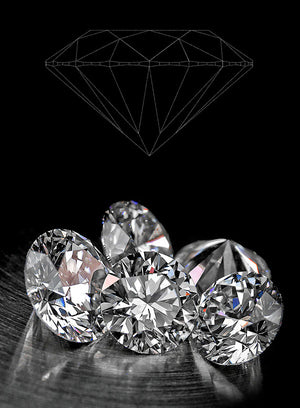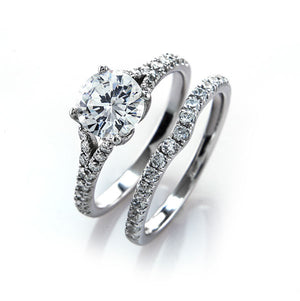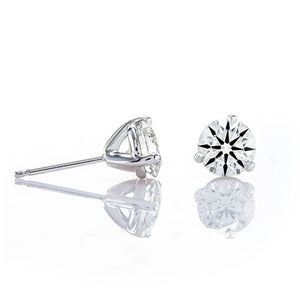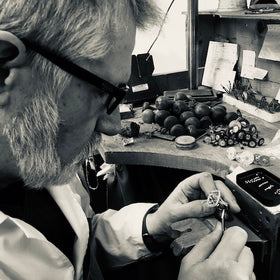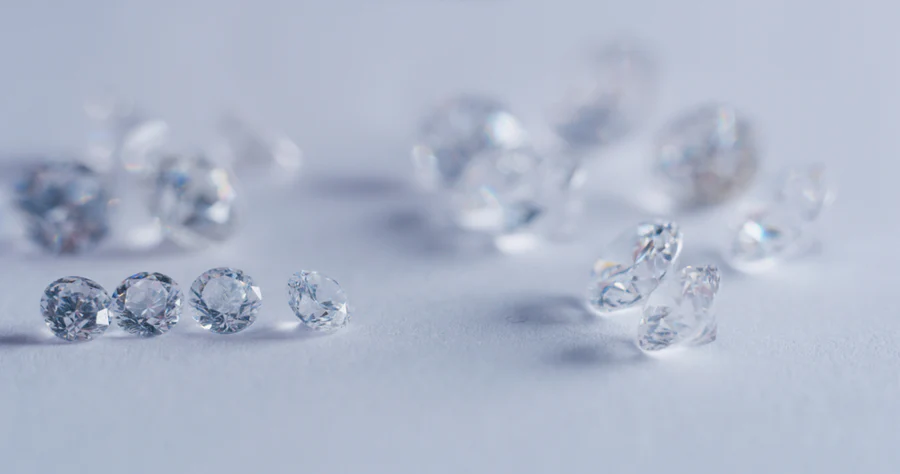
CVD vs. HPHT Lab Diamonds
Shopping for diamonds can be difficult. After all, there is a lot to learn when it comes to these sparkly stones! If you’re on the hunt for a lab grown diamond, you’ve likely come across many terms you may be unsure about, and this article will explore some of them.
Often, much of the confusion about lab diamond jargon comes down to how they’re grown. With lab grown diamonds, there are a few different methods to grow them. Most jewelers work with two of these methods: CVD lab grown diamonds growing method and HPHT lab grown diamond method.
But how are both of these types of lab diamonds made? What's the difference between those two lab diamond growing methods? Which should you choose?
At Brian Gavin Lab, we’re committed to making diamonds with unparalleled brightness and sparkle factor. And that’s why we’re here to help. Learn about CVD vs HPHT lab grown diamonds below and which diamond is best for you.
What are CVD Lab Diamonds?
CVD lab grown diamonds are made from the CVD method: Carbon Vapor Deposition. This means the interaction of different chemical components creates the CVD lab grown diamonds.
In the lab, CVD diamonds are grown in masses through multiple cycles. At Brian Gavin, we grow our Premium lab diamonds through a single growth cycle patent-pending process to ensure the best quality and light performance.
What is the CVD Lab Diamond Growing Method?
Created in the 1980s, the CVD lab grown diamond growing method is the newer method between CVD and HPHT lab diamond growth methods.
The CVD lab diamond process requires a diamond seed to be placed inside a vacuum chamber. The chamber is then filled with carbon gasses and heated to 1500 degrees Fahrenheit. The high temperature turns the gasses into plasma, which then releases carbon.
As the carbon is released, it layers onto the diamond seed—this is how the diamond grows.
What are HPHT Lab Diamonds?
HPHT stands for high pressure high temperature, and that’s precisely how HPHT lab diamonds are made.
HPHT lab grown diamonds are made within high pressure and high temperature environments. By heating up and applying immense pressure to a diamond seed, carbon melts around the seed and forms a diamond. Notably, this replicates the way natural diamonds are made.
What is the HPHT Lab Diamond Growing Method?
The HPHT lab diamond growing method is the original method of creating lab grown diamonds, which was created in the 1950s.
To grow an HPHT lab diamond, a diamond seed is placed in carbon and exposed to extreme heat and pressure. Temperatures as high as 2,000 degrees Fahrenheit and pressures as strong as 1.5 million PSI are applied.
When facing this extreme environment, the carbon around the diamond seed melts. It is then cooled, and a lab diamond is grown!
CVD vs. HPHT Lab Diamonds: Key Differences
There are few major differences between CVD and HPHT lab diamonds.
- They form in different shapes. A CVD lab diamond grows into a cube shape, while HPHT lab diamonds grow into a cuboctahedron shape. Both require cutting after the growth process.
- They grow in different directions. An HPHT diamond grows in 14 different directions, while a CVD diamond only grows in one.
- The price is a key difference between CVD and HPHT lab diamonds. HPHT lab diamonds are usually more expensive than CVD lab grown diamonds due to the difficulty and time it takes to make them.
- HPHT lab diamonds are usually smaller than CVD diamonds.
Can You Tell if a Lab Grown Diamond is CVD or HPHT?
If you’re looking at a lab-grown diamond with just your eye, you cannot tell whether it’s a CVD or HPHT diamond.
Both types of lab diamonds are real diamonds. So, you’ll only be able to tell the difference with a microscope, loupe, or optical assistance.
GIA reports will include the method used to create your lab diamond.
One way you can tell if your lab grown diamond is CVD or HPHT is by checking if it’s magnetic. HPHT lab diamonds can be magnetic because of the metals they are exposed to during forming. However, this is not always the case. So, it’s best to look at your lab diamond’s grading report to see what type of diamond it is.
The BGD Lab Stance
With Brian Gavin Lab Diamonds, we utilize both lab diamond growth methods. However, our Premium lab diamonds are made solely with the CVD method.
We have a unique CVD method that creates better transparency and clarity in our diamonds. This way, light can pass through the material unhindered. We do this by growing the diamond in a single cycle, making the lab diamond with more sparkle and better brilliance.
This is why we pride ourselves on a fifth C. Sure, you’ve heard of the 4 Diamond Cs—color, cut/shape, clarity, and carat—when it comes to diamonds. But at Brian Gavin, we instill a fifth C for cut/performance in addition to cut/shape.
Because we take such care with the cut performance of our lab diamonds, they have maximum light performance, which creates a world-class sparkle. We have multiple patents and proprietary cuts on diamonds to ensure our customers get the best quality lab diamond possible.
Brian Gavin Lab provides our clients with the best sparkle factor available. That’s also why we’ve invested the past two years into researching the best lab diamond growth processes to make high-performance diamonds.
Shop For Your Top-Quality Lab Diamonds Today
If you’re shopping for a lab grown diamond, you’re in luck. At Brian Gavin, we produce top-performance lab diamonds that give your jewelry the ultimate sparkle and radiance.
If you’re ready to start shopping for diamond engagement rings, begin your search here! Whether it’s a pear, emerald, marquise, heart diamond, or any other option, you’ll find what you’re looking for at Brian Gavin Diamonds.
Remember: whether you choose an HPHT lab grown diamond or a CVD lab grown diamond, you can do no wrong. Both will give you a beautiful diamond!





